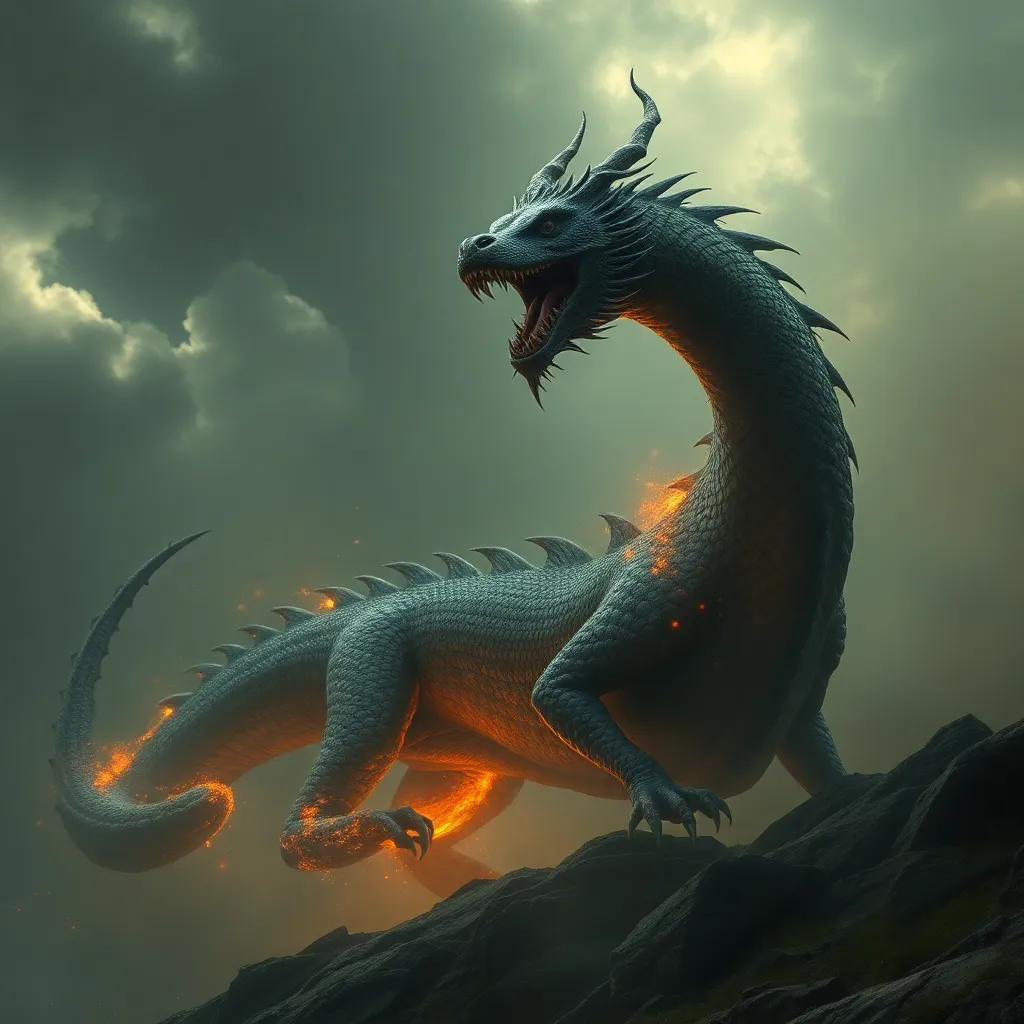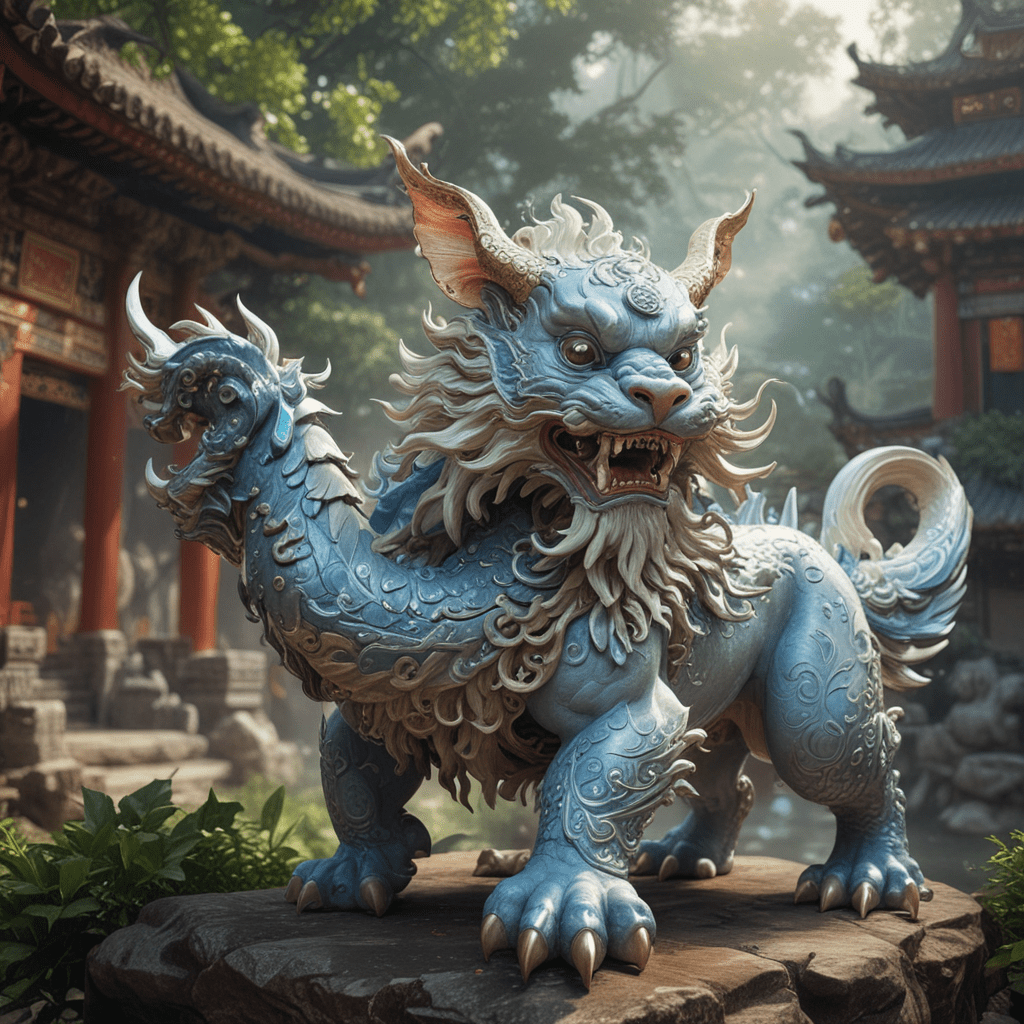Fafnir’s Revenge: The Dragon’s Role in the Nibelungenlied
I. Introduction
The Nibelungenlied is a monumental work in medieval German literature, recounting tales of heroism, betrayal, and tragedy. It encapsulates the rich tapestry of Germanic mythology, where the threads of fate are woven tightly with the destinies of its characters. Among these characters is Fafnir, a dragon whose existence and actions resonate deeply within the narrative, symbolizing the destructive nature of greed and vengeance.
Dragons, as mythological creatures, often serve as embodiments of chaos, power, and moral lessons. Their significance transcends cultures, appearing in various forms and functions throughout literature. In the Nibelungenlied, Fafnir stands out as a pivotal figure whose curse and transformation highlight the themes of ambition and betrayal that permeate the epic.
II. The Origins of Fafnir
A. Fafnir’s transformation from a man to a dragon
Fafnir was originally a dwarf, a member of a race known for their skill in crafting and mining. However, his insatiable greed for the cursed gold of the Nibelungs led to his metamorphosis into a dragon. This transformation is not merely physical; it symbolizes the profound changes that greed can impose on an individual’s character and spirit.
B. The curse of the gold and its implications
The gold, known as the Nibelung treasure, is central to Fafnir’s narrative. It is cursed, bringing misfortune to all who possess it. This curse illustrates the corrupting power of wealth and the inevitable downfall it brings to those who seek it. Fafnir’s greed leads to his isolation and ultimate transformation, serving as a cautionary tale about the perils of avarice.
C. The significance of greed and betrayal in Fafnir’s story
Fafnir’s story is steeped in themes of betrayal. He betrays his brother, Regin, out of a lust for power and wealth, highlighting the destructive effects of greed. This betrayal sets off a chain of events that reverberates throughout the Nibelungenlied, weaving a narrative rich with conflict and moral ambiguity.
III. Fafnir in the Context of the Nibelungenlied
A. Comparison of Fafnir to other mythical creatures in the epic
In the Nibelungenlied, Fafnir stands alongside other mythical beings, such as Siegfried and Hagen, who each embody various aspects of heroism and villainy. While Siegfried represents the archetypal hero, Fafnir embodies the darker side of ambition. This contrast highlights the duality of human nature, where noble aspirations can quickly devolve into destructive desires.
B. Fafnir’s connection to the themes of vengeance and power
Fafnir’s narrative is steeped in vengeance. His transformation is driven by a desire for power, and this quest ultimately leads to his downfall. The interplay of vengeance and power is a recurring theme in the Nibelungenlied, where characters frequently grapple with the consequences of their actions.
C. Exploration of the dragon as a literary device in the narrative
The dragon serves as a powerful literary device, symbolizing not only physical danger but also the internal struggles of the characters. Fafnir’s presence in the narrative emphasizes the themes of transformation and the moral dilemmas faced by the heroes. As a formidable adversary, he challenges Siegfried, forcing the hero to confront not only the dragon but also his own motivations and desires.
IV. The Role of Fafnir’s Gold
A. Description of the cursed treasure and its origin
The cursed treasure of the Nibelungs originates from the Rhine River, where it was guarded by the dwarf Alberich. This gold carries a dreadful curse that brings doom to its possessors. Fafnir’s desire for the gold leads to his transformation, emphasizing the idea that wealth can corrupt and destroy.
B. The impact of the gold on the characters in the Nibelungenlied
- Siegfried: Gains the treasure but faces dire consequences.
- Gunther: Seeks power through the gold, leading to betrayal.
- Hagen: Manipulates others to achieve his goals, showcasing the destructive nature of greed.
C. Analysis of the consequences of greed and desire for power
The pursuit of Fafnir’s gold drives many characters to moral ruin. The insatiable desire for wealth leads to betrayal, conflict, and ultimately tragedy, illustrating that the quest for power often comes at a steep price. Through Fafnir’s story, the Nibelungenlied warns of the dangers inherent in unchecked ambition.
V. The Heroic Confrontation
A. Siegfried’s quest to slay Fafnir
Siegfried’s journey to confront Fafnir serves as a pivotal moment in the epic. Armed with the knowledge of the dragon’s weaknesses and aided by the guidance of Regin, Siegfried embarks on a quest that tests his bravery and resolve. This confrontation is not merely physical but also moral, as it forces Siegfried to reckon with the implications of his actions.
B. The symbolism of the dragon in Siegfried’s journey
The dragon symbolizes the ultimate challenge that Siegfried must overcome to prove his worth as a hero. Fafnir represents the darker aspects of ambition and greed that Siegfried must confront within himself. The battle against the dragon serves as a rite of passage, marking Siegfried’s transition from a mere warrior to a legendary hero.
C. The significance of the battle between good and evil
The confrontation between Siegfried and Fafnir embodies the classic struggle between good and evil. Siegfried, representing noble intentions and heroism, battles Fafnir, who embodies the destructive forces of greed and betrayal. This epic clash highlights the moral complexities of the characters and the consequences of their choices.
VI. Fafnir’s Legacy and Influence
A. The repercussions of Fafnir’s death on the storyline
The death of Fafnir marks a significant turning point in the Nibelungenlied. It sets off a chain reaction of events that lead to further conflict and tragedy among the characters. The aftermath of his death reveals the fragile nature of alliances and the destructive power of greed that continues to haunt the living.
B. How Fafnir’s tale influences later characters and events
Fafnir’s legacy extends beyond his own story, influencing characters like Hagen and Gunther, who become embroiled in the same cycle of greed and betrayal. His tale serves as a reminder of the consequences of ambition, shaping the destinies of those who follow in his wake.
C. The lasting impact of Fafnir in Germanic mythology
Fafnir remains a significant figure in Germanic mythology, representing the archetypal dragon that embodies greed and destruction. His story has influenced countless retellings and adaptations in literature, solidifying his place in the pantheon of mythical creatures.
VII. Themes Explored Through Fafnir’s Character
A. Exploration of vengeance, loss, and fate
Fafnir’s narrative explores the themes of vengeance and loss, illustrating how the quest for power can lead to tragic outcomes. The interplay of fate and free will is also prominent, as characters grapple with their destinies shaped by their desires.
B. The moral lessons derived from Fafnir’s narrative
Fafnir’s story serves as a cautionary tale about the perils of greed and ambition. It emphasizes that the pursuit of wealth and power often leads to devastation, not only for the individual but also for those around them.
C. The interplay between human ambition and supernatural elements
The narrative showcases how human ambition can awaken supernatural forces, leading to dire consequences. Fafnir’s transformation is a direct result of his greed, blurring the lines between human desires and the supernatural forces at play.
VIII. Conclusion
Fafnir’s role in the Nibelungenlied is both significant and multifaceted. He serves as a powerful symbol of the destructive nature of greed and the consequences of vengeance. His transformation from a dwarf to a dragon reflects the moral decline that ambition can




